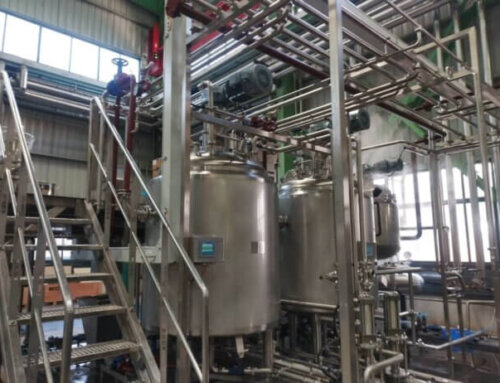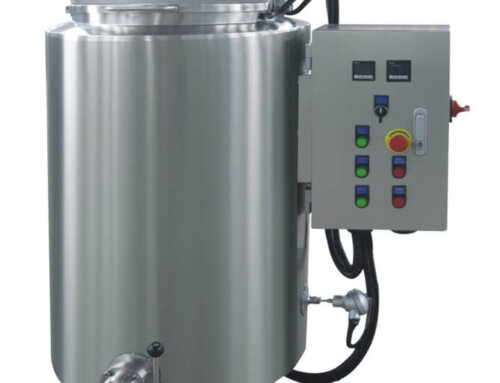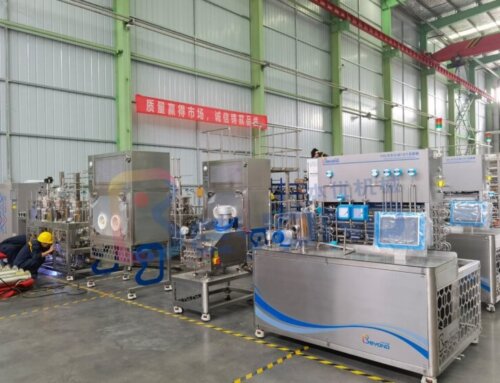Milk Pasteurization Purpose
The pathogenic microorganisms that may be contained in milk include Mycobacterium bovis, Brucella, Salmonella and other miscellaneous bacteria. In addition, during the milking process, the milk may also come into contact with the milkman’s unclean hands, unclean milk utensils and packaging materials can contaminate milk. For the above reasons, it is not safe to drink fresh milk directly from cows. Generally, bulk milk has not been sterilized and is easily polluted by the external environment. Therefore, bulk milk purchased from farmers must be pasteurized and cannot be drunk directly.
Pasteurization kills disease-causing microorganisms, as well as mold and other microbes that can affect the taste and shelf life of products. Therefore, the purpose of pasteurization milk is to eliminate pathogenic and harmful bacteria in milk, ensure the health of consumers and improve the stability of milk during storage and transportation.

Milk Pasteurization Prcoess
Milk is a neutral product that is rich in protein, vitamins, fat and various trace elements. Therefore, it is very important to select a suitable milk pasteurization process to ensure product safety and nutrition retention.
Milk pasteurization process time and temperature combinations
From the point of view of killing microorganisms, the stronger the heat treatment intensity of milk, the better. However, strong intense heat treatment will have adverse consequences on the appearance, taste, and nutritional value of milk. For example, the protein in milk will be denatured at high temperatures, and strong heating will change the taste of milk. First, there will be a cooked smell, and then a burnt taste. Therefore, the combination of time and temperature must take into account both microbiological and product quality aspects to achieve the best results. The following table shows the temperature and time combinations commonly used in the milk pasteurization process:
| Pasteurizing Process | Temperature | Time |
|---|---|---|
| Pre-pasteurization | 63-65℃ | 15S |
| LTLT pasteuriztion | 63℃ | 30min |
| HTST pasteuriztion | 72-75℃ | 15-20S |
| Ultra-pasteuriztion | 121-125℃ | 2-4S |
| UHT Sterilization | 135-140℃ | 2-4S |
| Hold Sterilization | 115-120℃ | 20-30min |
Milk pasteurization process and method introduction
Milk Pre-pasteurization: The purpose of milk pre-pasteurization is mainly to kill psychrophilic bacteria, because long-term low-temperature storage of milk will lead to a large number of psychrophilic bacteria, which in turn will produce a large number of low-temperature resistant lipolytic enzymes and proteases. In large dairy processing plants, a portion of the milk must be stored in large milk bins for processing. In this case, even low-temperature cooling cannot prevent the milk from spoiling, so many dairy plants pre-pasteurize the milk. The milk pasteurization process is to heat the milk from 4°C to 63-65°C, hold it for 15 seconds, and then cool it down to 4°C.
LTLT Milk Pasteurization: This is a batch-type method of pasteurizing milk. The milk is filled in stainless steel tanks, and then the milk is heated to 63°C with steam or hot water and kept for 30 minutes. This batch milk pasteurization method has low efficiency, and the milk is heated for a long time, so it has been eliminated. At present, the method of continuous sterilization is adopted.
Milk HTST Pasteurization: The specific milk pasteurization time and temperature combination can vary depending on the type of product being processed. The high-temperature short-time pasteurization process for fresh milk is to heat the milk at 72-75°C, keep it at 15-20S or 80-85°C, keep it at 10-20S and then cool it down to 4℃. This is a pasteurization method commonly used by dairy companies at present. This method is relatively good. The nutrition in the milk is relatively less lost, the bacteria are more thoroughly killed, and the flavor of the milk is relatively better preserved.
Milk Ultra-pasteurization: When there are special requirements for pasteurized milk shelf life, ultra-pasteurization can be used. For some producers, an extra two days is sufficient, while others are aiming for a shelf life of their products that is 30-40 days more than the limit of 2-16 days for traditional pasteurized products. The principle is to reduce recontamination during production and packaging to prolong product shelf life. This requires a very high level of production hygiene and strict distribution temperatures, not exceeding 7°C – the lower the temperature, the longer the shelf life. Milk is heated to 125~138°C, kept for 2-4 seconds, and cooled to below 7°C, these conditions are the basis for extending shelf life. ESL, namely extended shelf life, is a special term for heat-treated products, which uses some method to improve the preservation quality of products. Regardless, ESL products must remain cool during distribution and retail storage.

Pasteurization Effect On Milk Composition
- Effects on milk microorganisms: Pasteurization kills most bacteria in milk, but it does not sterilize it. Spores in bacteria and thermotolerant bacteria in milk are difficult to kill by pasteurization, so pasteurization must be stored under refrigerated conditions. In Europe, the total number of pasteurized milk bacteria cannot exceed 30,000/mL, and the United States stipulates that it cannot exceed 20,000/mL.
- Effects on milk nutritional content: Pasteurization has little effect on the nutritional components of milk, the loss of fat-soluble vitamin A and vitamin D is not obvious, and the denaturation of whey protein is 3%-5%.
- Effects on milk enzymes: During the milk pasteurization process, the destruction of lipase and proteolytic enzymes can reduce the decomposition of fat and protein, prevent milk from producing bad flavor, and prolong the shelf life of milk.




